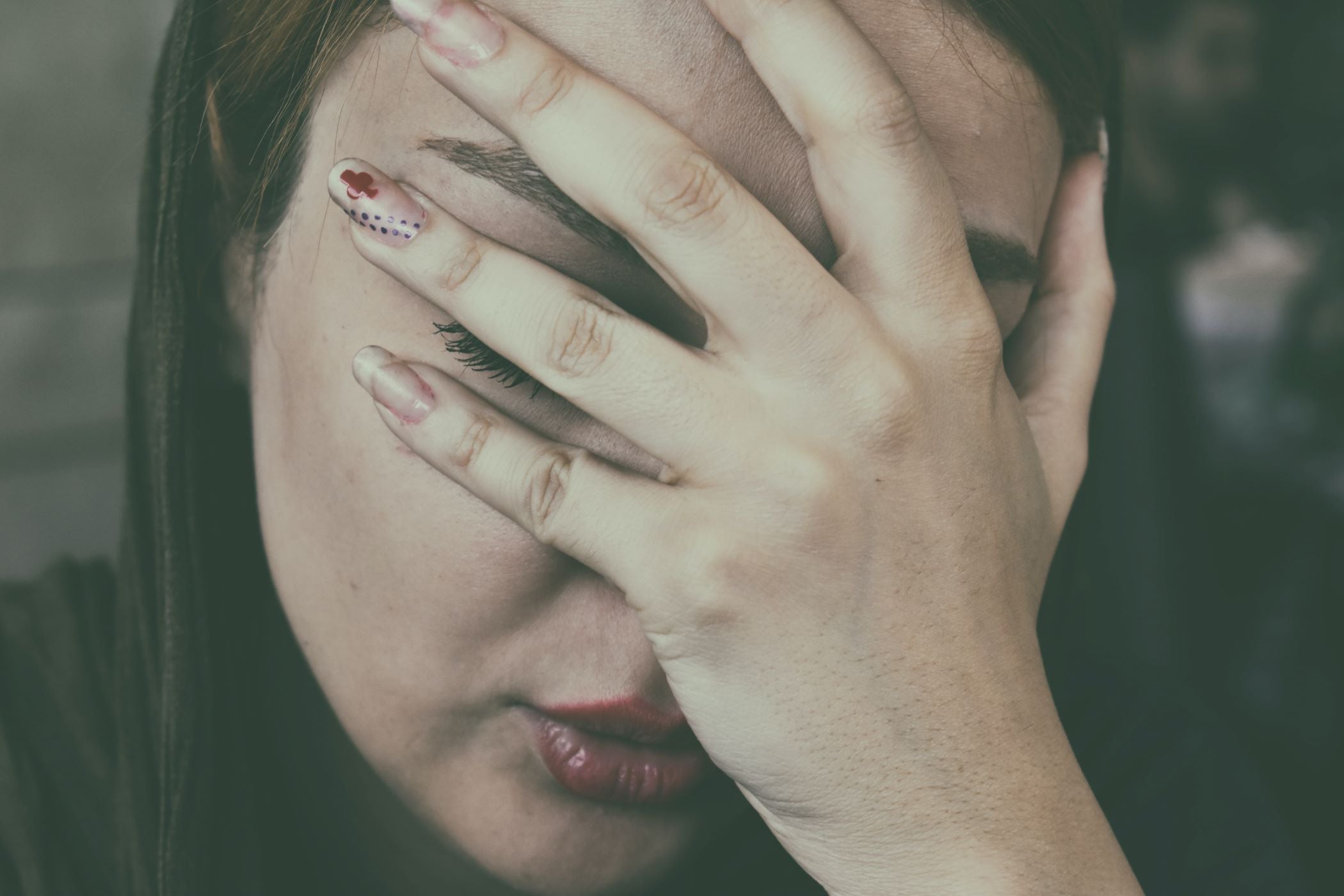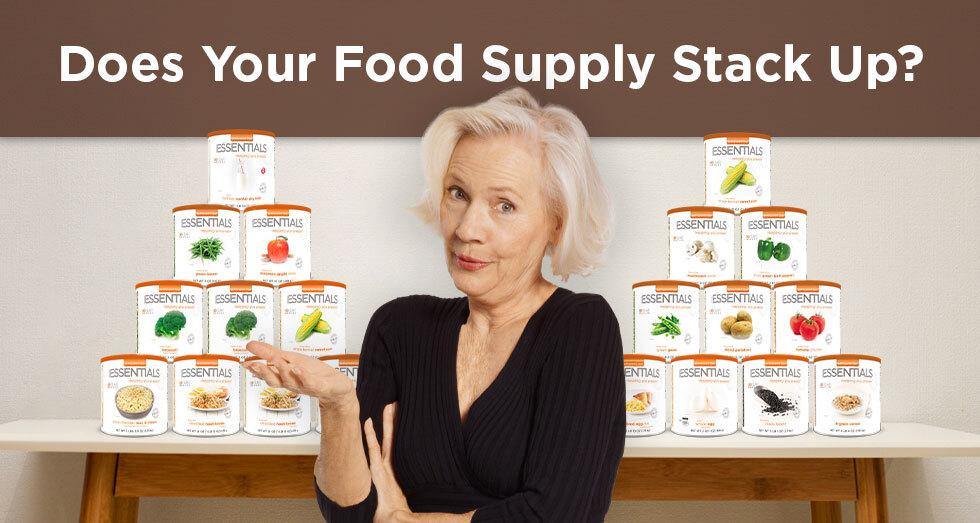You may have noticed how popular prepping is these days (thanks to COVID). Consumer options for emergency food have exploded. With a little bit of planning and saving, anyone who wants a food supply can have one.
BUT (and this is a big but) not all emergency food supplies are worth your time and money.
If you find yourself toying with the idea of building a new food stockpile or adding food to your existing supply, take our advice and make sure it checks each of the critical criteria below. If not, you’re better off spending your hard-earned dollars elsewhere.
1. Multiple Months of Food and Water
It used to be that the 72-hour kit was the centerpiece of emergency supplies. These days, if you want to survive, you’re going to need a lot more than that.
What’s changed? Put simply, there are more weather-related disasters than ever. Floods, fires, and hurricanes have all hit historic levels over the last decade. Add to that the current (and growing) pandemic threats around the world, and it’s easy to see how just a few days or even weeks of emergency food just won't cut it anymore.
WHAT TO LOOK FOR

Working your way up to multiple months worth of food doesn't have to be difficult. It just takes time. Start with 72 hours or a month if you can, then three months, six months, and so on.
If you’re starting from scratch, good for you! We recommend taking your preparations one step at a time. If your budget's tight, you're totally fine starting with a food kit that will last 72 hours. If you're able though, a better first step is a one-month food supply plus water--you need about a gallon per person, per day.
And don't stop there! In time, work your way up to three months of food and water, then six months, and then 12. For some people, this can require years to accomplish. Have patience. If you take it on one simple piece at a time, you’ll be surprised at how manageable and affordable one year of emergency food can be.
2. Enough Calories to Keep Your Healthy
Emergency nutrition is in large part a balancing act. Simply put, you need to take in as many calories as you burn. How many calories that adds up to depends on a few things:
- Demographics – Generally, women need fewer calories than men. People between the ages of 18 and 50 require more than their younger and older counterparts.
- Temperature – According to the American Council on Exercise, our cardiovascular systems burn extra calories keeping the body cool. The same thing can happen in cold weather if you’re shivering.
- Activity levels – The more you move, the more calories you burn. Some professional athletes require two to four times the average number of calories!
WHAT TO LOOK FOR: AT LEAST 2,000 CALORIES PER ADULT/DAY

Caloric needs vary by factors like age and gender. As a general rule, if you're an adult, look for food supplies that provide at least 2,000 calories per day.
As a rule, the average adult woman expends at least 1,600 calories per day and the average adult man burns around 2,000. But regardless, we recommend planning for at least 2,000 calories a day per adult.
That’s because in emergencies you tend to churn through calories quickly. Survivors will often tell you that they moved around a lot after disasters, doing things like helping clear out roads and carrying supplies to neighbors and families.
And even if you end up sitting indoors during a disaster, the extra amount of stress you feel could increase levels of cortisol in your body. This raises your metabolism and causes you to burn through calories more quickly even when you’re sitting still.
3. Nutrition: Protein and Micronutrients
You know you need at least 2,000 calories per day, but what kinds of calories should you be stockpiling in your emergency food supply?
WHAT TO LOOK FOR: MACRONUTRIENTS, MICRONUTRIENTS, PROTEIN
The quick answer to that question is macro and micronutrients. We’ve talked about these at length just a few weeks ago, so for the sake of the current conversation, we’ll just say that you need plenty of both.
For long-term emergency planning, though, there are two things that even experienced prep experts can tend to skimp on: protein and micronutrients. Deficiencies in these areas are the most common causes of health problems in long-term emergencies, leading to protein-energy malnutrition (PEM) and micronutrient malnutrition.
Protein

Look for a supply that gives you 40 to 50 grams of protein per day. Animal products provide complete proteins, as do beans and rice (among other foods).
Adults need roughly 40 to 50 grams of protein per day. When you’re looking for an emergency kit, make sure you get at least that much. Also, look for kits with “complete proteins” that contain the essential amino acids your body can’t produce on its own.
Animal proteins like meat and eggs are great sources of complete protein, but plants can give you what you need as well. When you eat them together, rice and beans make a great complete protein too.
Micronutrients
Micronutrients are the roughly 30 vitamins and minerals that your body can’t produce enough of to fill its needs. If you’re super careful you can get all your essential micronutrients through your food, but we recommend supplementing with a multivitamin just to be sure. Make sure it comes with iron, vitamins A and D, iodine, folic acid, and zinc.4. Variety

While there is a strong psychological element, that "sick" feeling you get from eating the same foods over and over can lead to real physical illness.
If you’ve ever felt down or even a little sick after eating the same food over and over, then you’ve experienced “food fatigue.”
Come to find out, food fatigue isn’t just discouraging , it’s actually bad for your health! Your organs, muscles, skin, bones, and immune system need a variety of nutrients to function. Without that, your health will deteriorate quickly. You’ll experience low energy and depression, then nausea, cramps—even organ failure over time.
WHAT TO LOOK FOR: PRE-MADE MEALS
The good news is you don’t have to be a dietician to get the right variety in your emergency food supply. A good supply should come with pre-cooked, complete meals that take the guess work out of variety.
5. Food That's Prepared the Right Way
The big temptation when building an emergency supply is to rely too heavily on standard grocery store foods: canned goods, boxed meals, etc.
And from a cost standpoint, it’s easy to see why.
Just as an example, a single #10 can of Emergency Essentials freeze-dried peaches worth 33 dollars gives you about the same amount of fruit as nine cans of peaches from Walmart, worth about a dollar each or nine dollars total.
In other words, ounce for ounce, grocery store peaches are roughly a third the cost of Emergency Essentials peaches. That’s a lot cheaper!
But the real story here isn’t upfront cost—it’s shelf life. Because they’re soaked in (acidic) juices, the grocery store peaches will have to be replaced every two to three years—five if we’re being generous.
 The Emergency Essentials #10 canned peaches, on the other hand, last up to 30 years. To keep grocery store peaches for that long, you’d have to rotate 90 cans at a cost of 90 dollars.
The Emergency Essentials #10 canned peaches, on the other hand, last up to 30 years. To keep grocery store peaches for that long, you’d have to rotate 90 cans at a cost of 90 dollars.
WHAT TO LOOK FOR: FREEZE-DRIED AND DEHYDRATED FOODS
The biggest secret to emergency food longevity—and value—is the preparation method. Instead of being preserved by juices, freeze dried and dehydrated foods have moisture almost completely removed. This slows the growth of mold and bacteria and keeps foods fresh and tasty for many years.
6. Food That's Packaged to Last
The right packaging is every bit as important for emergency food as the method of preparation. For long-term food packaging, there are three things to look for—the properly-sized oxygen absorber, the quality of material, and a 100% seal.
WHAT TO LOOK FOR: THE #10 CAN

There are few better ways to meet all these criteria than the humble #10 can—a food storage classic for a reason. When it comes to durability and multi-utility, these are just about the best protection you’ll find. Sturdy metal walling keeps out pests, sunlight, moisture, and chemicals. And at 5x the size of a soup can, it fits enough to feed a family! They also fit a lot more food per container and stack easily.
Keep on Doing Your Homework!
This list is just the beginning! For a more comprehensive discussion on macronutrients and micronutrients, check out this article on surviving the first three days of a disaster, and this article on how to survive for two weeks.
To understand more about what to look for in emergency food preparation and packaging, read this detailed article comparing emergency food to grocery store food.


8 comments
BePrepared.com
Thank you so much for your feedback, Laura and Dennis . Agreed! Your supply needs one gallon of water per person per day for everything from food rehydration to drinking, cleaning, and hygiene. We cover water preparedness at some length here, if you’re interested: https://bit.ly/3qaTO8V
BePrepared.com
Vicky, that is the first we’ve heard of macaroni cookies. We have carried macaroon granola in the past. We also carry macaroni and cheese (you can find it here: https://bit.ly/35vsV7U).
BePrepared.com
Debbie, it’s recommended to store emergency food between 55 and 70 degrees Fahrenheit.
Henry M Niedzwiecki
Some good advice here, but canned peaches will last longer than two years. As long as air doesn’t get in the can.
Debbie Stephens
What are the temperature variations acceptable for long-term foods?
Laura Lechner
I agree with what you said, and it is all worth considering. I was surprised that nothing was said about water, however. One can live a long time with no food, but not long at all without water.
I would put the need for water ahead of food. Laura
dennis
You are great at providing food but it isn’t doing you a bit of good unless you have a source of good clean water. Don’t forget a person can do without for 28 days without food but only 3 days without water and we require 3 16oz bottles a day on average. So how are you addressing that?
Vicky walters
Do you still carry the macaroni cookie mlz?